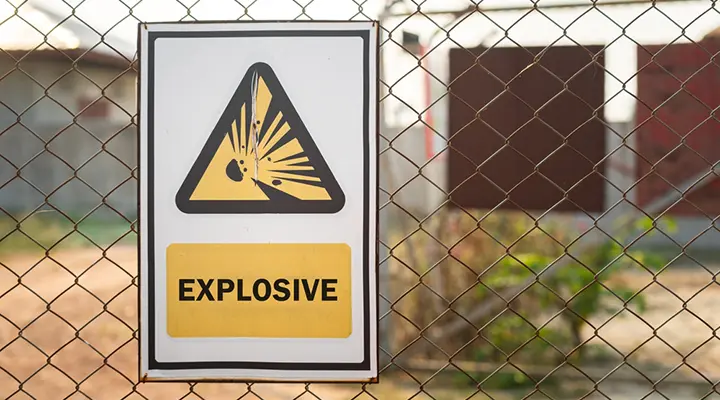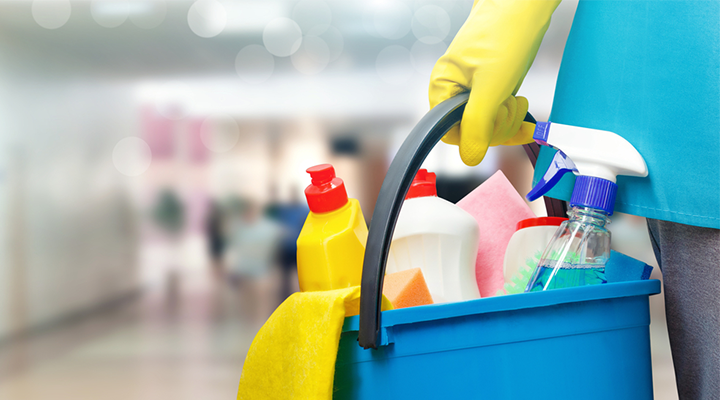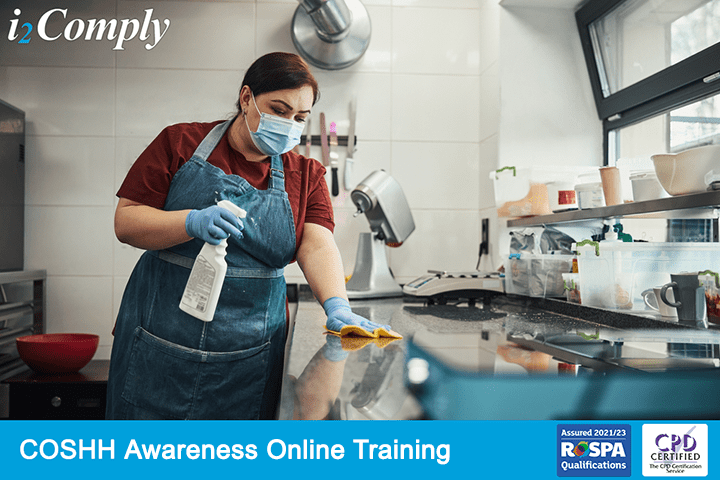Why is COSHH training important? Most workplaces use substances or products that could cause harm to people’s health or pose risk to their life. According to the latest HSE statistics, approximately 13,000 people die every year. Mostly, due to past exposure to chemicals or dust at work. 19,000 people experience breathing and lung problems. Also, around 7,000 people experience skin problems that started or became worse at work.
Training on COSHH helps to ensure that employees understand the risks of working with hazardous materials. As a result, they follow internal protocols, which is essential to mitigate the risk of illness and injury.
What does COSHH mean?
COSHH stands for the Control of Substances Hazardous to Health. It is a set of health and safety regulations that requires businesses to protect its employees from harmful substances. COSHH regulations outline essential safety measures for storing, handling, using and disposing of hazardous substances. The aim of COSHH regulations is to reduce the risks that these substances pose and keep exposure to a minimum.
Our RoSPA-assured online COSHH training course explains the risks hazardous substances pose in the workplace and the control measures that must be in place so you can work safely.
The training covers Regulation 12 of the Control of Substances Hazardous to Health (COSHH) Regulations 2002 that states every employer who undertakes work which is liable to expose an employee to a substance hazardous to health, shall provide that employee with suitable and sufficient information, instruction, and training.
What does COSHH cover?
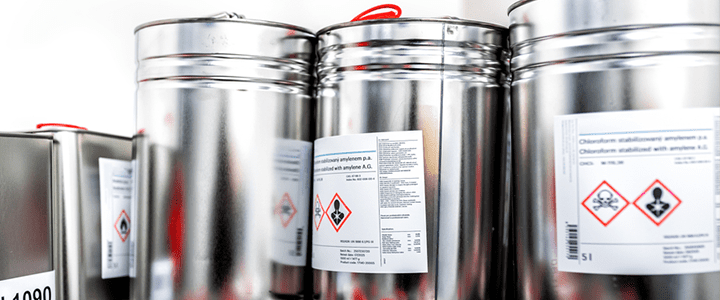
Any substances that can be hazardous to a person’s health or life are covered by COSHH. For instance, chemicals, products holding chemicals, fumes, dusts, vapours, mists, nanotechnology, gases and asphyxiating gases, and biological agents. These substances may cause harm when they come into contact with skin or eyes, when they are inhaled, swallowed or injected. Also, they can cause explosion and fire.
What are the COSHH symbols and their meanings?
Any containers that hold a hazardous substance or hazardous element must display a COSHH symbol label. There are 9 COSHH symbols that alert people about the harm that a substance or a product can cause. The symbols also warn people that they must take proper precautions to avoid any harm to themselves, others, or the environment. COSHH symbols are international. Therefore, people who handle or use hazardous substances can recognise and understand these symbols across the world.
Hazardous substances must display one or more of the of the following COSHH symbols.
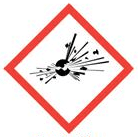
Explosive symbol
warns that a substance can potentially explode if not handled and stored with extreme care. People should only use these substances with specialised training and supervision. This symbol marks explosives such as fireworks and ammunition.
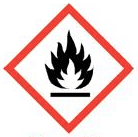
Flammable symbol
warns that a substance can easily ignite and burn quickly. This symbol marks flammable substances or products such as industrial solvents, cleaners, adhesives, paints, waxes, and polishes. People must keep flammable substances away from heat, sparks or open flames.
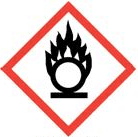
Oxidising symbol
warns about substances that can cause a dangerous reaction with other substances. This reaction could start a fire or explosion and increase the intensity of a fire. Oxidisers can be dangerous when using or storing them near heat, sparks or open flames. Oxidisers are common in most workplaces, and it is usually present in bleach. Therefore, hairdressers and cleaners should be mindful about how they use and store their bleaching products. The Oxidising COSHH symbol is also present on medical oxygen cylinders.
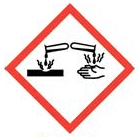
Corrosive symbol
warns about substances that can damage living tissue or any other material if they come into contact with it. Corrosive substances can damage metals or other strong materials and severely injure skin and eyes. If a person breathes in or swallows a corrosive product, it can burn their nose, throat, or stomach. For example, corrosive substances are present in bleach, drain cleaner and pesticides. They are also present in activities such as printing and preserving food. Workers must wear PPE to ensure that they do not come into contact with a corrosive substance and suffer harm.
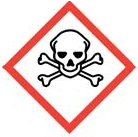
Toxic symbol
means that a substance can cause severe health damage, even if a person is exposed to a small amount and for a short time. If a person swallows, inhales or touches the substance with bare skin, the consequences can be fatal. Toxic substances should be substituted with safer alternatives, otherwise they must be handled with extreme care. If a person does come into contact with a toxic substance, they must seek immediate medical advice. For instance, the toxic symbol label is present on pesticides, biocides and methanol.
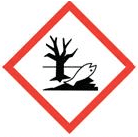
Hazardous to the environment symbol
warns about substances that can cause serious immediate or long-term damage to one or more components of the environment if people use or dispose of them incorrectly. This symbol is present on containers that hold pesticides, petrol, turpentine and biocides. These substances cause damage in rivers and lakes, so people should never pour them down the drain.
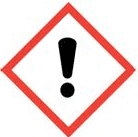
Health hazard symbol
means that a substance can cause harm to health. If a person swallows, inhales or touches these substances, they may feel drowsy or dizzy. Also, they may experience eye irritation, respiratory problems or allergic reactions. For example, the Health hazard symbol is present on washing detergents, toilet cleaners and coolant fluid.
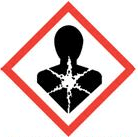
Serious health hazard symbol
symbol warns that a substance can severely damage a person’s health or can even be fatal if they ingest or inhale it. Small exposures to these substances over a long period of time can cause asthma, allergies, cancer, infertility or genetic defects. For instance, the serious health hazard symbol is present on turpentine and petrol containers.
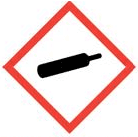
Gas under pressure symbol
is present on containers that store pressurized gas, such as gas containers, cylinders and air conditioning units. The symbol warns that a gas container may explode when heated and cause a fire. This symbol is also present on refrigerated gas containers, which could cause cryogenic injuries and burns if they are damaged.
Who is affected?
Most workplaces use a variety of substances that are hazardous to health. This means that many people come into contact with these substances daily without having a true understanding of COSHH hazards and risks. For example, people who work in cleaning, decorating, beauty and hairdressing salons, healthcare, manufacturing, construction, transport, utilities, laboratories, farms, office environments and other occupational settings.
If people do not handle hazardous substances correctly, they can suffer serious illnesses or injuries. The consequences can even be fatal. Also, depending on the hazards of these substances, workers can develop serious skin diseases, breathing conditions, cancers and other health complications. Inappropriate handling of hazardous substances can also cause fires and explosions. It present dangers to workers’ health and can cause life-threatening burn injuries.
COSHH risks are different in each occupation. Whatever your job, it is essential to understand COSHH and be able to recognise COSHH symbols. Also, you must be aware of harmful substances and the dangers associated with using them at work.
Who is responsible for COSHH at work?
The main responsibility to keep good COSHH standards in a workplace and follow COSHH regulations falls on employers. They must safeguard workers’ health and safety and control employees’ exposure to hazardous materials. Employers must implement correct policies and procedures and train employees.
Every employee must protect themselves and their colleagues from the dangers of hazardous substances. This means that they must follow the health and safety measures that their employer has put in place. It may include reporting any issues, wearing correct PPE and adhering to all information provided in COSHH training.
What are employer’s responsibilities under COSHH?
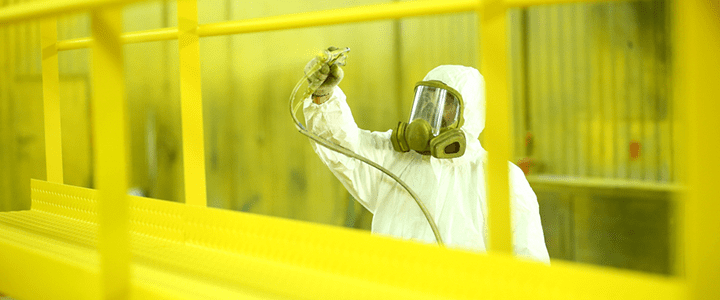
In order for employers to comply with COSHH Regulations 2002, the following measures must be taken, employers must:
1. Have a written risk assessment
Have a written risk assessment for any substances that workers are using or producing within the workplace that are hazardous to health. The risk assessment must name the substances that are harmful, specify who is in danger and how, and evaluate the risks. If your company doesn’t have someone to carry out adequate checks, you may be interested in our online risk assessment course.
2. Decide on precautions to prevent exposure
Decide on precautions to prevent exposure, such as replace a substance with a safer alternative or change work practices so that people are less exposed to the harmful substance. For example, a factory might lower the temperature to minimise the amount of harmful vapour getting into the air. As a result, people don’t inhale it.
3. Prevent exposure
Prevent exposure to hazardous substances if it is reasonably practical to do so. Otherwise, apply measures to adequately control exposure to the hazardous substance. For example, increase ventilation, reduce the time workers are exposed to a harmful substance, provide PPE and display warning signs.
4. Use and maintain control measures
Ensure that a workplace uses and maintains control measures to reduce exposure to a substance hazardous to health. Control measures include reviewing work systems, examining ventilation, cleaning the workspace and equipment, or assessing quality and effectiveness of PPE. Employers must review these measures regularly.
5. Keep track of exposure to any hazardous substances
Keep track of exposure to any hazardous substances in the workplace. Also, ensure that it does not exceed legal workplace exposure limits.
6. Conduct health surveillance
Conduct and record health surveillance in appropriate cases to assess employees’ health regarding exposure to hazardous substances.
7. Plan for emergencies
Plan for emergencies to conduct essential procedures in an emergency involving a hazardous substance.
8. Provide information, instructions and training
Provide information, instructions and training for employees and anyone that can be exposed to hazardous substances in the workplace. They must be are aware of the substances they are using and the risks associated with exposure to these substances. Most importantly, employees understand the precautions they should take and emergency procedures they must follow.
Need COSHH Awareness training?
COSHH training is essential for anyone whose work involves hazardous substances. Our online COSHH training helps people to recognise hazardous substances, understand the health risks associated with exposure to the substances and helps them to understand the importance of following correct work practices, including handling, storing and disposing of hazardous substances. Training helps to minimise accidents and keep workers safe in their daily activities.
Also, COSHH training is essential to comply with COSHH regulations. According to the Control of Substances Hazardous to Health (COSHH) Regulations 2002, every employer who undertakes work which is liable to expose an employee to a substance hazardous to health shall provide that employee with suitable and sufficient information, instruction and training.
We offer the following online RoSPA assured and CPD certified course:

